#Korean Gochujang
Explore tagged Tumblr posts
Text
Spice Up Your Dishes with Gochujang: Discover the Flavors of Chilli Hot Pepper Paste!
Looking to add a burst of flavor and a touch of heat to your dishes? Look no further than Gochujang! This vibrant Korean ingredient has gained popularity around the world for its unique taste and versatility. In this article, we'll explore the wonders of gochujang, a chili hot pepper paste that can take your culinary creations to the next level. Get ready to tantalize your taste buds and embark on a flavor-packed journey!
What is Gochujang?
Gochujang (pronounced go-choo-jang) is a traditional Korean condiment that has been used for centuries. It is a thick, sticky paste made from red chili peppers, fermented soybeans, glutinous rice, and salt. The combination of these ingredients gives gochujang its complex and robust flavor profile, with a perfect balance of spiciness, sweetness, and umami.
Flavorful and Versatile:
One of the reasons gochujang has gained immense popularity worldwide is its incredible versatility. Its unique flavor adds depth to a wide range of dishes, from traditional Korean cuisine to fusion recipes. Gochujang can be used as a marinade for grilled meats, a base for stews and soups, a dipping sauce for dumplings, or even as a condiment to enhance the flavor of burgers, tacos, and sandwiches. The possibilities are endless!
Taste Experience:
When you taste gochujang, you'll encounter a delightful symphony of flavors. The initial kick of spiciness from the chili peppers is balanced by a natural sweetness derived from the fermented soybeans and rice. The fermentation process adds depth and complexity, resulting in a rich umami taste that lingers on your palate. The combination of heat, sweetness, and umami creates a flavor experience that is truly unforgettable.
Where to Find Gochujang:
Gochujang is becoming increasingly accessible, and you can find it in many grocery stores, both online and offline. Look for it in the international or Asian section of your local supermarket, or visit an Asian grocery store for a wider variety of options. Additionally, many online retailers offer gochujang in various brands and heat levels, allowing you to explore different flavor profiles according to your preference.
Experimenting with Gochujang:
Now that you have gochujang in your pantry, it's time to get creative! Start by adding a spoonful to your stir-fries or sautéed vegetables for a spicy kick. Mix it into your marinades for meats, tofu, or seafood to infuse them with a depth of flavor. You can even create your own gochujang-based sauces by combining it with ingredients like soy sauce, garlic, ginger, or honey. Let your imagination run wild and discover new and exciting taste combinations.
Conclusion:
Gochujang is a true gem of Korean cuisine that has captured the hearts (and taste buds) of food enthusiasts worldwide. Its distinctive flavors, ranging from spicy to sweet and savory, make it a versatile ingredient that can elevate any dish. So, don't hesitate to embrace the wonders of gochujang and embark on a culinary adventure filled with exciting and delicious flavors!
#gochujang#gochujang jjigae#gochujang stew#how to make gochujang#gochujang recipe#vegan gochujang recipe#gluten free gochujang#gochujang noodles#gochujang noodle#gochujang fried rice#how to make hot pepper paste#hot pepper paste#homemade red pepper paste#korean red pepper paste recipe#homemade gochujang#homemade hot pepper paste#gochujang recipes#gochujang master#korean gochujang recipe#korean gochujang#korean hot sauce#red pepper#red pepper sauce#korean pepper paste#korean hot pepper paste#red pepper paste#gochujang paste#gochujang red pepper paste#lucky store#buy now
0 notes
Text

Korean beef bulgogi
#beef#bulgogi#korean food#dinner#food#beef bulgogi#meal#main course#korean bbq#soy sauce#gochujang#asian food#tasty#foodporn#delicious#cooking#food photography#foodgasm#recipes#food porn
650 notes
·
View notes
Text

(via Instagram)
217 notes
·
View notes
Text

My summer sale continues until August 1st! Get 20% off with code SUMMER24 xx
421 notes
·
View notes
Text
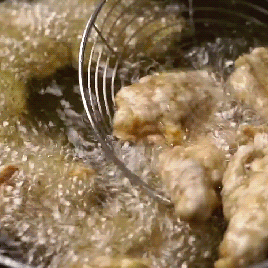
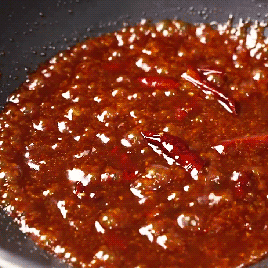

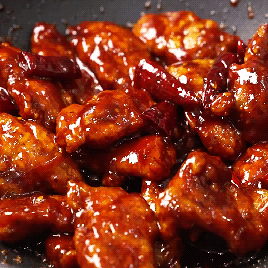
Sweet and Spicy Korean Fried Chicken (x)
#food#food porn#KFC#korean fried chicken#chicken#fried chicken#gochujang#recipe#recipes#food gif#gifset#gif#mine
683 notes
·
View notes
Text

Bulgogi Bibimbap
#food#recipe#dinner#bibimbap#bulgogi#beef#brisket#rice#carrots#zucchini#squash#spinach#bean sprouts#eggs#mushrooms#cucumber#gochujang#dairy free#korean
191 notes
·
View notes
Photo
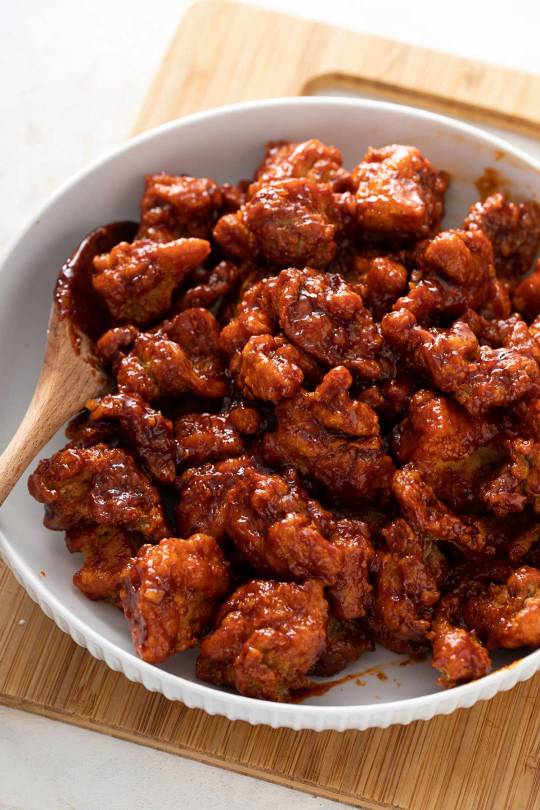
crispy korean fried chicken with sticky gochujang sauce
1K notes
·
View notes
Text
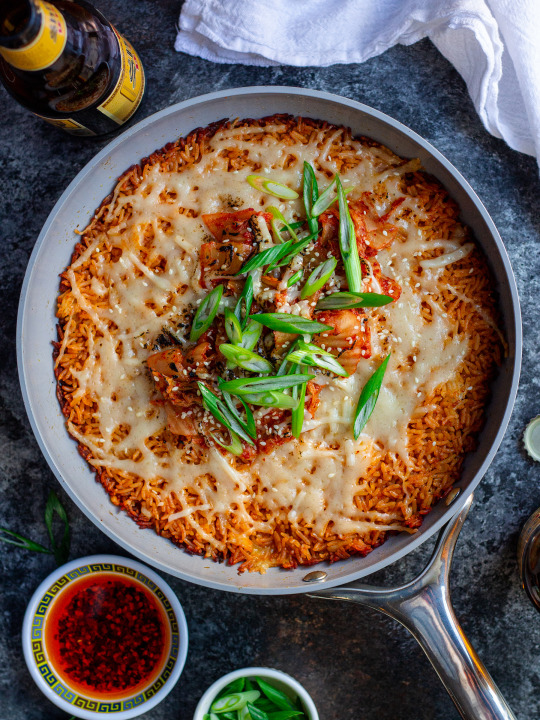
Cheesy Gochujang Skillet Fried Rice
#eatfigsnotpigs#korean#korean fried rice#rice#dinner#savoury#fried rice#vegan#vegetarian#food#recipe#recipes#cheese#cheesy#gochujang#veganfood#vegan food#whatveganseat#what vegans eat#kimchi#tasty#i wanna lose weight#korean food#korean recipe#korean recipes#i need to lose this weight#i need to lose so much weight#i wanna be tiny#i wanna be skinnier#3ating d1sorder
95 notes
·
View notes
Text
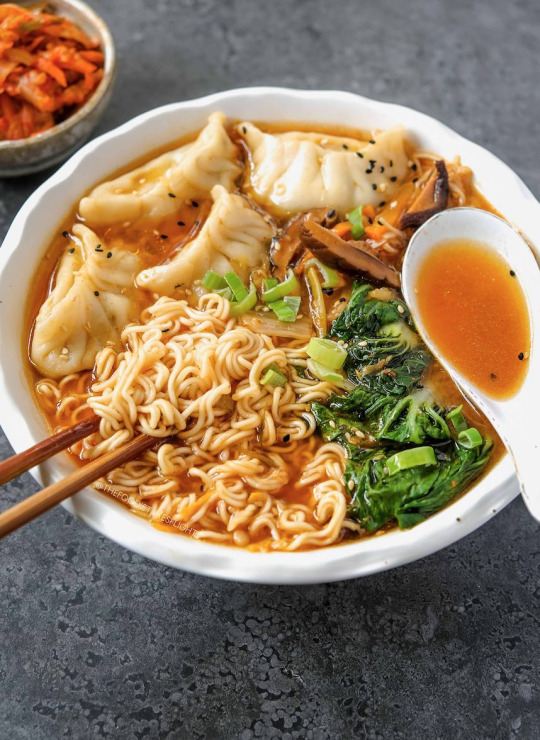
Vegan Kimchi and Dumpling Noodle Soup
#vegan#lunch#dinner#korean cuisine#East Asian cuisine#soups#noodles#kimchi#dumplings#mushrooms#miso#gochujang#garlic#sesame oil#bok choy#sesame seeds#green onion
116 notes
·
View notes
Text

[ID: A close-up of a baguette lined with sliced cucumber and topped with cauliflower coated in a deep red sauce, diced tomato, and a white sauce. End ID]
Sandwich with sesame-gochujang cauliflower and garlic-yoghurt sauce
Inspired by Vietnamese bánh mì thịt, this submarine sandwich pairs fresh vegetables with fried cauliflower coated in a spicy, tangy, savory, and sweet sauce. Toasted sesame oil and the fermented notes of gochujang add depth and complexity to the mildly nutty backdrop of the cauliflower, while the raw garlic in the yoghurt sauce brings the taste profile to a sharp head.
Also consider pairing the gochujang cauliflower with vegetables of your choice in a rice bowl or salad.
Recipe under the cut!
Patreon | Paypal | Venmo
Ingredients:
Serves 4.
For the dish:
4 bánh mì, or 2 freshly baked baguettes halved and cut open
300g cauliflower florets (1/2 a small head)
1/2 cucumber, sliced
2 inches carrot, julienned
1 small roma tomato, diced
Other toppings of choice
Drizzle toasted sesame oil
1 Tbsp toasted sesame seeds
For the batter:
2 Tbsp (15g) all-purpose flour
2 Tbsp (20g) potato starch
1 Tbsp (10g) egg replacer for baking (optional)
Water
For the gochujang sauce:
2 Tbsp gochujang
1 Tbsp gochugaru (Korean red chili flakes)
1 Tbsp granulated sugar
1 Tbsp Korean soy sauce
2 tsp rice vinegar
2 cloves garlic, grated
1 green onion, sliced
Pinch salt
Pinch MSG (optional)
Several cracks ground black pepper
Water
For the yoghurt sauce:
1/4 cup non-dairy yoghurt
1 clove garlic, grated
1 tsp high-fructose corn syrup, or sugar
1/2 tsp rice vinegar
Pinch salt
Instructions:
1. Break cauliflower into smallish florets and wash. Prep vegetables.
2. Mix all gochujang sauce ingredients and use a blender or immersion blender to pulverise the green onion. Add a bit of water as necessary to achieve a slightly runny consistency. Set aside.
3. Mix all yoghurt sauce ingredients and whisk to combine. Set aside.
4. Heat a small pot with several inches of oil to 350 °F (175 °C). Mix all dry batter ingredients in a mixing bowl. Add just enough water to obtain a mixture the consistency of pancake batter. Do not overmix.
5. Coat cauliflower with batter and carefully drop one floret at a time into the oil. You may have to fry them in multiple batches. Fry until lightly golden brown and floating. Set aside onto a paper-towel-lined plate.
6. Increase the heat to bring the oil to 400 °F (200 °C). Fry cauliflower again for 30 seconds until deeply golden brown. Set aside.
If you aren't comfortable deep-frying, you may bake battered cauliflower at 400 °F (200 °C) for 30 minutes, turning over halfway through.
7. Heat a large skillet on medium and cook gochujang sauce, stirring often, until thickened. Add cauliflower and stir to coat. Drizzle in sesame oil and sesame seeds and stir again.
8. Serve immediately with bread, vegetables, and yoghurt sauce.
114 notes
·
View notes
Photo

Crispy Baked Gochujang Tofu (Korean-Inspired)
284 notes
·
View notes
Text
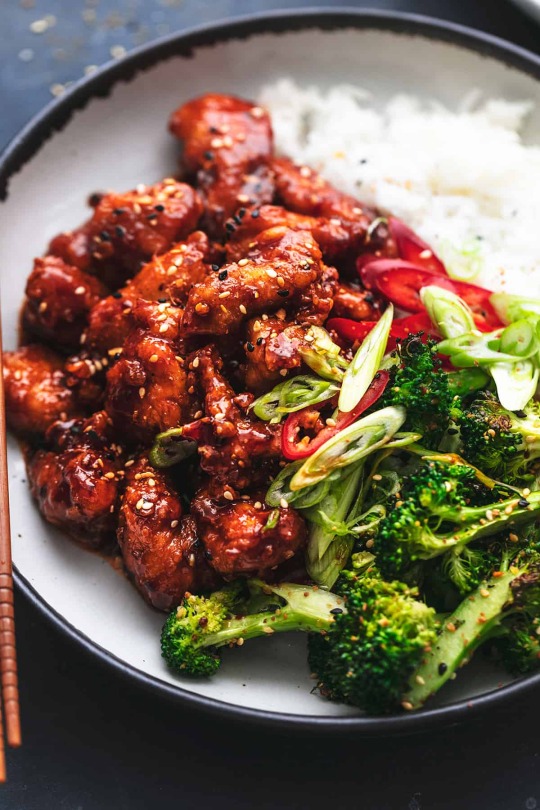
Korean fried chicken
#chicken#fried chicken#korean fried chicken#korean food#food#dinner#meal#asian food#spicy chicken#crispy chicken#meat#gochujang#main dishes#tasty#foodporn#delicious#cooking#food photography#foodgasm#recipe
2K notes
·
View notes
Text

Slow Cooker Korean Pulled Pork Sandwiches (x)
#dinner for tomorrow!#pulled pork sandwiches#pulled pork#Korean pulled pork#Korean pulled pork sandwiches#slow cooker pork#slow cooker pork recipe#slow cooker Korean pulled pork#slow cooker Korean pulled pork recipe#Korean pulled pork recipe#Korean pork recipe#Korean pork#pork#pork sandwiches recipe#pork recipe#sandwiches#food#food blog#yum#dinner#dinner ideas#dinner recipe#pork dinner recipe#gochujang pork#Gochujang#kimchi#quick cucumber kimchi#cucumber kimchi#korean bbq#korean barbecue
39 notes
·
View notes
Text

Throw back to Diwali 2019, my first Diwali ever with my dearest friend in the lab. I made Sweet and Spicy Tofu for the party!
Recipe is here!
9 notes
·
View notes
Text

Korean BBQ Sauce
26 notes
·
View notes